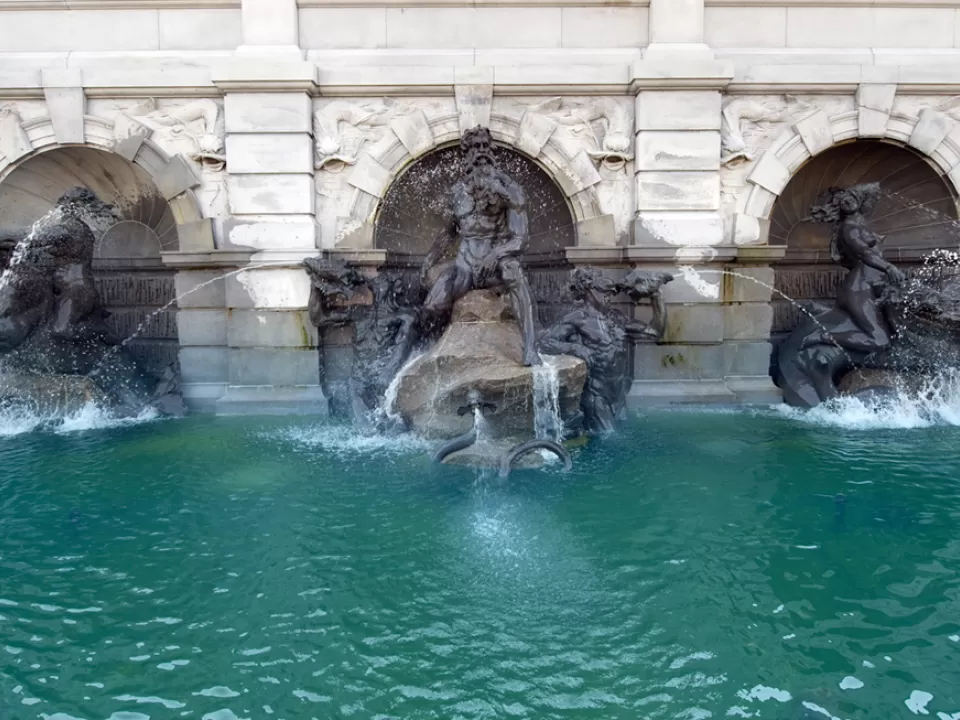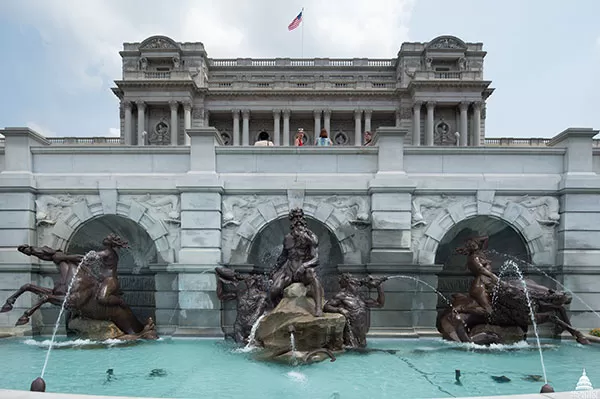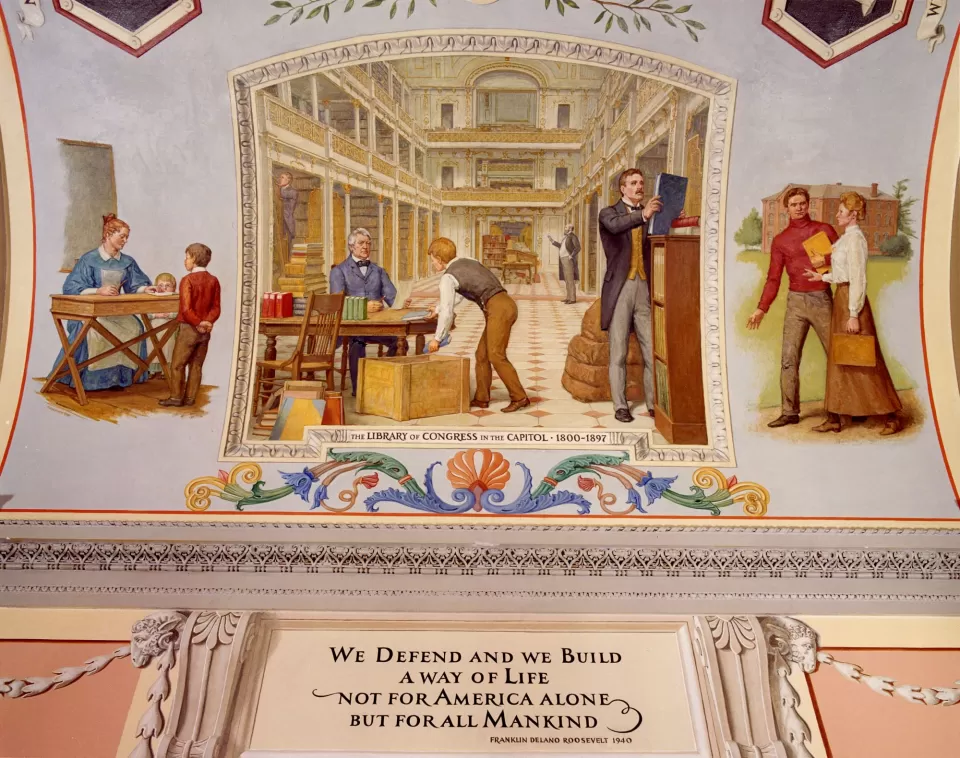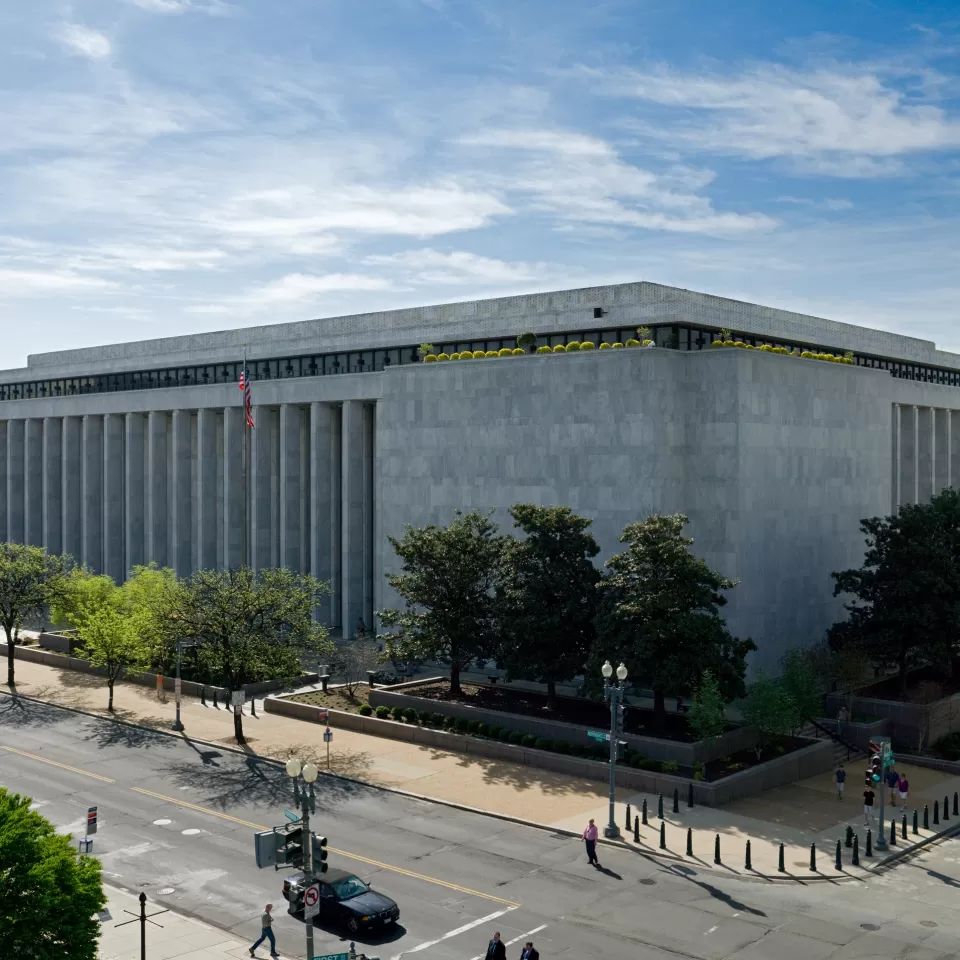
Highlight
Court of Neptune
Passersby enjoy the play of the jets of water on the majestic, bearded and muscular king of the sea; his sons the tritons blowing conches; the frolicking, horseback-riding Nereids (sea nymphs); and the water-spouting turtles, frogs and sea serpent, placed in front of a grotto-like wall. The tritons and the seahorses have fish tails instead of legs. The horse, sacred to Neptune, symbolizes water.
Image Gallery















Library of Congress Buildings




